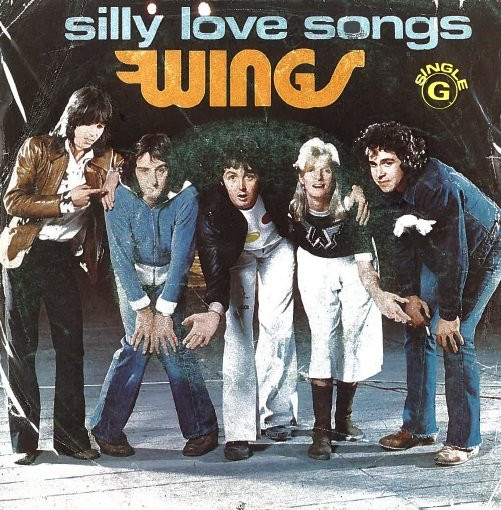About the Album:
Tales of Mystery and Imagination was not supposed to be the start of the band. Alan Parsons and Eric Woolfson, who had worked together at the famous Abbey Road studios where the last few Beatles albums were recorded, collaborated to create a one-shot project “based on the work of American author Edgar Allan Poe.” DV ”As unlikely as the idea seems today…listeners in the 1970s--who were barraged with such high-flown concepts during the heyday of prog-rock--turned the record into a major hit.” AZ It was “ambitious, daring, and audacious for its time.” DV
Parsons tapped a host of performers to serve as session musicians on the album. He roped in all four members of Ambrosia (David Pack, Joe Puerta, Christopher North, Burleigh Drummond) and all four members of Pilot (David Paton, Ian Bairnson, Stuart Tosh, Billy Lyall). The latter was a band Parsons was producing; they had a 1975 top 5 hit with the song “Magic” while under Parsons’ watch. The Project was also aided by a variety of vocalists (a practice that followed on every album to come), including Terry Sylvester (who sang lead on the Hollies’ top 10 hits “He Ain’t Heavy, He’s My Brother,” “Long Cool Woman in a Black Dress,” and “The Air That I Breathe”), Arthur Brown (who had a #2 hit in 1968 with “Fire”), and British singer John Miles (who had a #3 UK hit with 1976’s “Music”).
Also lending his services on this, and every Project album to follow, was Andrew Powell, who “arranged and conducted the orchestra and choir that dominate the album.” RS Powell’s contributions went a long way in defining the Project’s sound as falling into the vein of the symphonic prog-rock of bands like The Moody Blues.
Tales makes for “an extremely mesmerizing aural journey.” AMG “Without any underlying theme to be pondered upon, Alan Parsons instead paints a vivid picture of one of the most alluring literary figures in history by musically reciting his most famous works in expert fashion.” AMG The ”variety of different singing styles adds color and design to the album's air.” AMG “With the use of synthesizers, drums, guitar, and even a glockenspiel, Parsons' shivering effects make way for an eerie excursion into Poe's well-known classics.” AMG
“Parsons' expertise surrounds this album” AMG “which means unlike most progressive rock 'masterpieces' you can actually listen to it without slogging through mud. The sound is astonishingly crisp for a 1976 recording -- as Parsons himself put it in the liner notes to the 1987 version, ‘it is interesting to note that Tales was originally recorded without the use of such now commonplace items as digital reverberators and delays, drum machines, or computer assisted mixing.’ Given those standards, the stingingly clear sound is even more astonishing.” DV
A “slyness…prevails in (The System Of) Doctor Tarr and Professor Fether,” AMG a song which features some great “vocal counterpoint.” DV This was even a top 40 single in the U.S.
The Raven was also released as a single. It didn’t fair near as well, stalling at #80, but “thanks to FM radio overplay [it] is probably the album's best-known track today.” AZ There is “a clever use of vocoder to distort Parsons' vocal intro.” DV In fact, ”the EMI vocoder is used throughout…with the Westminster City School Boys Choir mixed in to add a distinct flair to it's chamber-like sound.” AMG
The 1987 remix of this album fleshes out the instrumental opener Dream Within a Dream with “Orson Welles narrating in front of this wispy collaboration of guitars and keyboards.” AMG
“The bodeful thumping of the drums…imitate a heartbeat on The Tell-Tale Heart.” AMG Arthur Brown, who went to #2 with 1968’s “psychedelic-era hit "Fire,” lends his “unique vocal ravings [which] supply the necessary dose of hysteria” RS one would expect from music based on Poe.
There’s also The Cask of Amontillado, which “is a beautiful piece of work,” DV and ”the wistful To One In Paradise [is] a suitable close.” DV
“The most ambitious track,” RS The Fall of the House of Usher, “is a lengthy but dazzling array of musicianship that keeps the album's persona in tact, while enabling the listener to submerge into it's frightening atmosphere.” AMG It “is both beautiful and unpretentious, an excellent piece of classical composing;” DV it “rises majestically with a Fantasia-like opening and a spectacular thunderstorm, then shifts into intermezzo and pavane passages that are quite moving. But the atonal, chaotic ‘fall’ seems more an intrusion on the rest of the opus than the holocaustal finale it should have been.” RS
“The album remains a classic excuse to dim the lights, pour a glass of sherry (amontillado, natch), and break out the headphones.” AZ “It's one of the…CDs that are de riguer for any fan of progressive rock to own.” DV
Notes: The 2007 deluxe edition included demos, unreleased material, an interview with Alan Parsons and Eric Woolfson, and a second disc featuring a 1987 remix of the album with more bonus tracks.
“The 1987 CD version…differs somewhat from the original vinyl. Parsons dropped in synthesizer parts to modernize the album,” AZ adds “some tasty guitar licks by Ian Bairnson,” DV and “an opening recitation by Orson Welles. But the integrity of the original is maintained well enough.” AZ
| 









